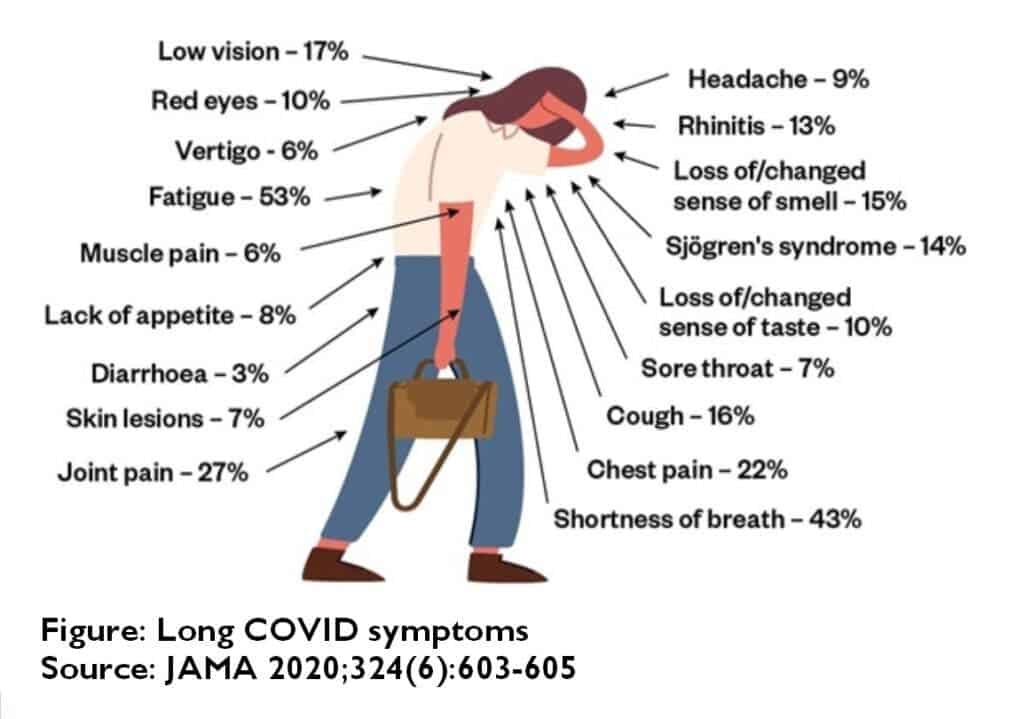
As if getting sick with COVID-19 wasn’t bad enough, some people are unfortunate enough to experience debilitating symptoms weeks or even months after their so-called recovery. These effects that continue for a long time beyond the initial illness are known under the umbrella term of long COVID, and scientists have only just begun to truly understand what causes it. According to a new study from South Africa, long COVID is linked to persistent microclots that trap inflammatory molecules.
The WHO estimates that anywhere between 10% and 20% of COVID-19 patients will experience lingering symptoms for a month or longer following infection. These prolonged symptoms include persistent fever, brain fog, shortness of breath, muscle and joint pain, sleeping difficulties, and depression. It’s no coincidence that these are also some of the typical symptoms of patients recently infected with the coronavirus. But if the symptoms last for at least two months after the onset of the disease, then the patient officially suffers from long COVID, according to the latest WHO definition.
What’s particularly damning about long COVID is that the symptoms come in waves, ebbing and flowing. Just when you thought you were finally fully recovered, a new wave of relapse hits you in the head like a brick.
“A very common feature is the relapsing, remitting nature of the illness, where you feel as though you’ve recovered, then it hits you back,” said Nisreen Alwan, associate professor in public health at the University of Southampton, during a panel discussion hosted by the British Medical Journal.
“It’s a constant cycle of disappointment, not just to you but people around you, who really want you to recover,” she added, reflecting on her own battle with long Covid.
For the time being, there are no proven remedy or rehabilitation guidelines for those with long COVID, who have to brave the ordeal, with debilitating consequences in people’s daily functioning and their capacity to work productively. It’s then no wonder that the prestigious medical journal The Lancet has described long COVID as “a modern medical challenge of the first order.”
But by understanding what causes long COVID, scientists may finally have a target for new therapies meant to banish COVID for good after the virus is flushed from the body.
In a recent op-ed published this week in The Guardian, Resia Pretorius, the head of the science department at Stellenbosch University in South Africa, claims that her research has identified persistent microclots in long COVID patients. These microclots are resistant to fibrinolysis, the process by which healthy people break down blood clots. Clot formation is perfectly normal and healthy, for instance when you cut yourself, but when they persist this can be a bad sign.
These microclots house high levels of inflammatory molecules that may not only prevent the breakdown of the clots themselves but also cause long COVID by starving cells of the precious oxygen they need to sustain regular bodily functions.
“The presence of persistent microclots and hyperactivated platelets (also involved in clotting) perpetuates coagulation and vascular pathology, resulting in cells not getting enough oxygen in the tissues to sustain bodily functions (known as cellular hypoxia). Widespread hypoxia may be central to the numerous reported debilitating symptoms,” Pretorius wrote.
Since the inflammatory molecules are trapped inside the fibrinolytic-resistant microclots, they are not detected by traditional lab tests, leaving both doctor and patient confused. With no obvious pathology to account for their symptoms, some patients are told that their problems are psychological and they should try to meditate and exercise. But these new findings tell us that we should know better.
The South African scientist adds that antiplatelet and anticoagulation medication may be key in treating long COVID cases, although great caution needs to be exercised in order to avoid any dangers caused by bleeding. Additionally, Help (heparin-induced, extracorporal, lipoprotein/fibrinogen, precipitation) apheresis – in which microclots and inflammatory molecules are filtered out in a dialysis-style treatment – may also have positive outcomes for patients, Pretorius added.
“Even those without long Covid could benefit from such research, as symptoms noted in long Covid patients show many similarities to those seen in chronic and viral-related illnesses including myalgic encephalomyelitis/chronic fatigue syndrome (ME/CFS) – another disease that has been dismissed as “psychological” for decades. Just because we have not yet identified a biomarker for long Covid does not mean biomarkers do not exist. We just need to look harder,” she said.






